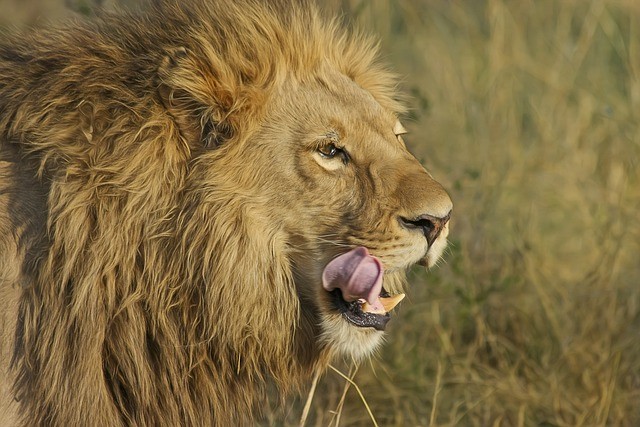The world is filled with animals, and some can be deadly due to their size and aggressiveness, like hippos and elephants. Others, like snakes and freshwater snails, are top killers because of the diseases they carry.
Despite being feared, animals in human communities can also be dangerous as per A-Z Animals. This article ranks the 10 most deadly animals based on the number of deaths they cause, considering factors like aggression and the percentage of fatal attacks.

Lion
Attacking mostly at night, BBC's Science Focus reported that lions use their sharp claws and powerful bite to inflict deep wounds and crack bones, making them fearsome beasts. They often hunt in small groups, surrounding their prey before striking. Lions can also charge if threatened, particularly during courtship or when protecting their cubs, as they attack primarily out of hunger or to defend their young.
Sharks
Contrary to their menacing portrayal in movies and TV, sharks are not as deadly as commonly believed. Worldwide, they are responsible for only a few hundred attacks on humans annually, resulting in an average of six to seven deaths per year. As per the Australian government's website, approximately 10 deaths are attributable to shark attacks worldwide.
The great white shark, bull shark, and tiger shark account for the highest percentages of fatal attacks among the 375 identified shark species, but only about 12 of these species are considered dangerous to humans.
Elephants
Elephants are widely known for their intelligence, friendly nature, and social structures. As the largest land animals, they possess immense weight and power. In captivity, elephants can display anger and retaliate, while those in the wild can be territorial and fiercely protective of their family members.
Unfortunately, encounters with elephants can turn deadly, with an average of 500 people per year being killed by these majestic creatures through trampling, throwing, crushing, and other unfortunate means.
Hippopotamus
The hippopotamus ranked as the third-largest land mammal after the elephant and rhinoceros. It is accountable for approximately 500 deadly human incidents annually, much like the previous entry on our list. However, it claims a higher position due to its notorious reputation for violence, aggression, and remarkably territorial behavior.
Tsetse Fly
Contrary to the common perception, it is not the tsetse fly's bite itself that causes human fatalities, but rather the resulting infection. Found in the tropical regions of Africa, this fly transmits a parasite that leads to African sleeping sickness.
As per A-Z Animals, mortality estimates vary due to the remote nature of the region and lack of comprehensive data, ranging as high as 500,000 deaths per year, but more reliable sources suggest that around 10,000 people succumb annually after being bitten by the tsetse fly.
READ ALSO : Top 5 World's Most Bizarre Deep Sea Creatures That Baffled the Scientists, One Is Possibly the Ugliest
Assassin Bug
Assassin bugs, a group comprising over 150 insect species, target the soft tissue around human mouths, they are commonly known as kissing bugs. Some species in Central and South America transmit a dangerous disease called Chagas disease that leads to 12,000-15,000 deaths annually, primarily caused by organ failure.
Crocodile
Crocodiles are notorious for their ferocity, causing around 1,000 reported fatalities each year due to their powerful bite and aggressive nature. According to an earlier report by Science Focus, the Nile crocodile possesses the strongest bite force in the world, up to 5,000 psi, while the saltwater crocodile comes in second with 3,700 psi.
Dogs
The man's best friend can also pose a serious threat when it comes to rabies. The World Health Organization's(WHO) data suggests that dogs are responsible for up to 99% of all human rabies transmissions, making it essential to be cautious and take preventive measures, as rabies is transmitted through saliva via bites, scratches, and direct contact with infected areas on the dog.
Snakes
Snakes, especially venomous ones like the black mamba, pose significant dangers to humans worldwide. Venomous snake bites are the most common cause of human deaths from these reptiles, leading to severe consequences such as amputations and permanent disabilities for some lucky survivors, as stated by WHO.
Mosquito
Mosquitoes are the world's deadliest animals, responsible for killing around 725,000 humans each year by transmitting diseases like malaria. Throughout history, these tiny insects have had a significant impact on human events, influencing American independence and the rise and fall of Rome. Malaria is most severe in Africa, with the region accounting for 95% of cases and 96% of deaths globally.
RELATED ARTICLE:
10 Strange Animals in the World With Weird and Unusual Features
Check out more news and information on Animals on Science Times.











